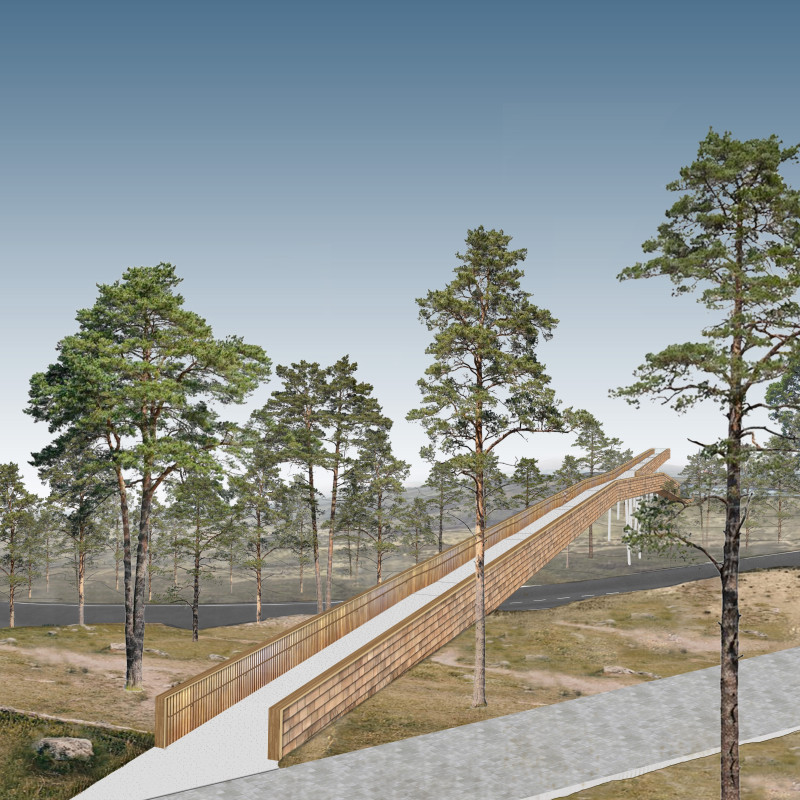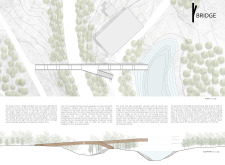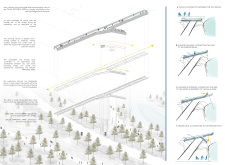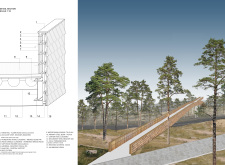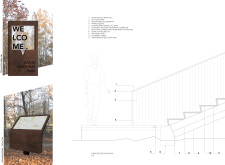5 key facts about this project
The architectural design project known as the Y Bridge emerges as an innovative structure situated in the Gauja National Park, Latvia. This project serves as a functional pedestrian and observational bridge, connecting various points along the park while providing users access to scenic vistas and natural landscapes. The design embodies a commitment to integrating human movement with the surrounding environment, ensuring that visitors can engage with the park's ecological and aesthetic qualities.
The Y Bridge, constructed primarily with pre-fabricated steel beams and reinforced concrete columns, emphasizes structural efficiency while maintaining visual continuity with the natural landscape. The bridge features multiple access points and dynamic pathways, encouraging exploration. Its design not only facilitates movement across the park but also invites users to pause and appreciate the environment. Key materials include wooden shingles for cladding, corten steel for durability, and glass panels strategically placed to enhance visibility.
Design Integration with Nature What distinguishes the Y Bridge from similar projects is its thoughtful integration into the existing topography and vegetation of Gauja National Park. The linear architecture contrasts with the organic forms of the surrounding trees while remaining respectful of the natural environment. Elevated observation areas are designed purposefully to frame specific views, thus enriching user experience while echoing the forms found in nature. The bridge’s layout promotes fluidity of movement, allowing visitors to navigate easily between various vantage points. Furthermore, the inclusion of an open passenger lift addresses accessibility, ensuring that all visitors can engage with the bridge's features without physical constraints.
Sustainable Material Use and Construction Techniques The project employs sustainable practices through the careful selection of materials that minimize environmental impact. Pre-fabricated components reduce on-site construction waste and contribute to a quicker assembly process. The integration of wood within the design reflects local architectural traditions while offering a tactile connection to the landscape. Corten steel elements not only provide longevity but also introduce visual texture, contributing to the overall aesthetic while weathering over time to harmonize with the environment. The Y Bridge stands out for its innovative use of materials combined with an ecological approach to the design, setting a benchmark for future public structures.
For further insights into the architectural plans, sections, designs, and ideas that shaped the Y Bridge project, explore the detailed presentation. This exploration will provide a comprehensive understanding of the design's intent and functional intricacies.


